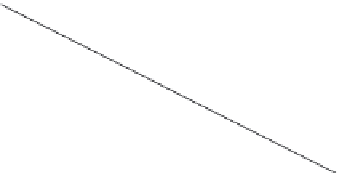Environmental Engineering Reference
In-Depth Information
Note that a capacitive load absorbs negative reactive power, which is equiva-
lent to generating positive reactive power.
2.3.2.2 Summary
The impedances for resistance, inductance and capacitance are therefore as follows:
Component
Symbol
Impedance
Resistance
R
R
Inductance
L
j
w
L
Capacitance
C
1/j
w
C
2.3.3 Power in AC systems
Consider the voltage and current phasors depicted in Figure 2.10. The current has
been resolved into a real or active component in phase with voltage and a reactive
component lagging the voltage by 90
.
Multiplying the currents in Figure 2.10 by the voltage magnitude results in
active power in phase with the voltage phasor and reactive power lagging the
voltage phasor by 90
, as shown in Figure 2.11. The diagram clarifies the rela-
tionship between active and reactive power, on the one hand, and the
apparent
I
cos
f
f
V
I
sin
f
I
Figure 2.10
Real and reactive components of current
V
I
cos
f
=
P
f
V
I
=
VI
∠−
f
Figure 2.11
Triangular relationship between active, reactive and apparent power




























Search WWH ::

Custom Search